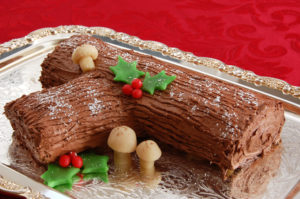Santa in Spanish, French and Other Languages
There’s one man who dominates Christmas and no it’s not your neighbor who puts up Christmas decorations the day after Thanksgiving. It’s Santa Claus! He’s the life of the party around the Christmas holiday, loves cookies & milk, and he travels the world delivering gifts to good boys and girls (and adults).
In different parts of the world where Santa visits, they call him different names and have different traditions when celebrating.
If you’ve ever wondered what Santa in Spanish, French, or another language is or how other cultures celebrate Christmas then you’re in the right place.
How To Say Santa in 14 Different Languages
![]() Santa in Spanish – Papa Noel
Santa in Spanish – Papa Noel
![]() Santa in French – Père Noël
Santa in French – Père Noël
![]() Santa in Italian – Babbo Natale
Santa in Italian – Babbo Natale
![]() Santa in Chinese – Dun Che Lao Ren (Christmas Old Man)
Santa in Chinese – Dun Che Lao Ren (Christmas Old Man)
![]() Santa in German – Weihnachtsmann (Christmas Man)
Santa in German – Weihnachtsmann (Christmas Man)
![]() Santa in Japanese – Hoteiosho (a God or priest that brings gifts)
Santa in Japanese – Hoteiosho (a God or priest that brings gifts)
![]() Santa in Russian – Ded Moroz (Father Frost)
Santa in Russian – Ded Moroz (Father Frost)
![]() Santa in Finnish – Joulupukki
Santa in Finnish – Joulupukki
![]() Santa in Turkish – Noel Baba
Santa in Turkish – Noel Baba
![]() Santa in Hungarian – Mikulas (St. Nicholas)
Santa in Hungarian – Mikulas (St. Nicholas)
![]() Santa in Danish – Julemanden
Santa in Danish – Julemanden
![]() Santa in Polish – Święty Mikołaj
Santa in Polish – Święty Mikołaj
![]() Santa in Romanian – Mos Craciun
Santa in Romanian – Mos Craciun
![]() Santa in Chilean – Viejo Pascuero (Old Man Christmas)
Santa in Chilean – Viejo Pascuero (Old Man Christmas)
So, you now know how to say Santa in many different languages but have you ever thought about how people in other cultures celebrate Christmas?
That’s right only in America do we picture Santa as a jolly, rosy-cheeked, red-suited man who delivers presents underneath a Christmas Tree via the chimney.
Christmas in Japan
In Japan, only 1% of their population believes in Christ so the Japanese celebrate Christmas a bit differently. Most Japanese people believe in Hotei-osho which is a Buddist Monk who asks like Santa, bring gifts to boys and girls on December 25th. People still decorate but instead of putting up a Christmas tree with lights, families & shop owners often decorate with evergreens.
Instead of turkey or a Christmas ham, it’s also a tradition for people to eat fried chicken as their Christmas meal. That right fried chicken, in 1974, KFC in Japan ran a marketing campaign to promote their food around the holidays, and ever since then their chicken sells out around Christmas time.
Christmas in Spain
Christmas is a deeply religious holiday in Spain as a large majority of people are Roman Catholic. On Christmas Eve or “Nochebuena” people cook and eat their Christmas Meal before they head off to midnight mass. After the service, it’s an old tradition for people to walk through the streets playing instruments and holding torches. One saying goes “Esta noche es Noche-Buena, Y no Es noche de dormir” which means ‘Tonight is the good night and it is not meant for sleeping!’. Children open presents on Christmas but most are opened at Epiphany which is on January 6th which is the day Catholics believe the three kings arrived to present gifts to Jesus
Christmas in France
On Christmas Eve, children leave their shoes by the fireplace so that Pere Noel “Santa” can fill them with gifts. Their shoes are often near a Christmas nativity scene as many people are Catholic in France. The French put on a play re-enacting the story of Christ’s birth in cathedral squares, they also beautifully light up their cathedrals and the sounds of church bells ring through the country. Around Christmas, their time is usually spent with their families shopping and baking. There is a traditional cake called the buche de Nol which means “Christmas Log”, the cake among other desserts and food is part of the tradition.

Traditional Christmas Yule Log cake decorated with marzipan mushrooms and holly
